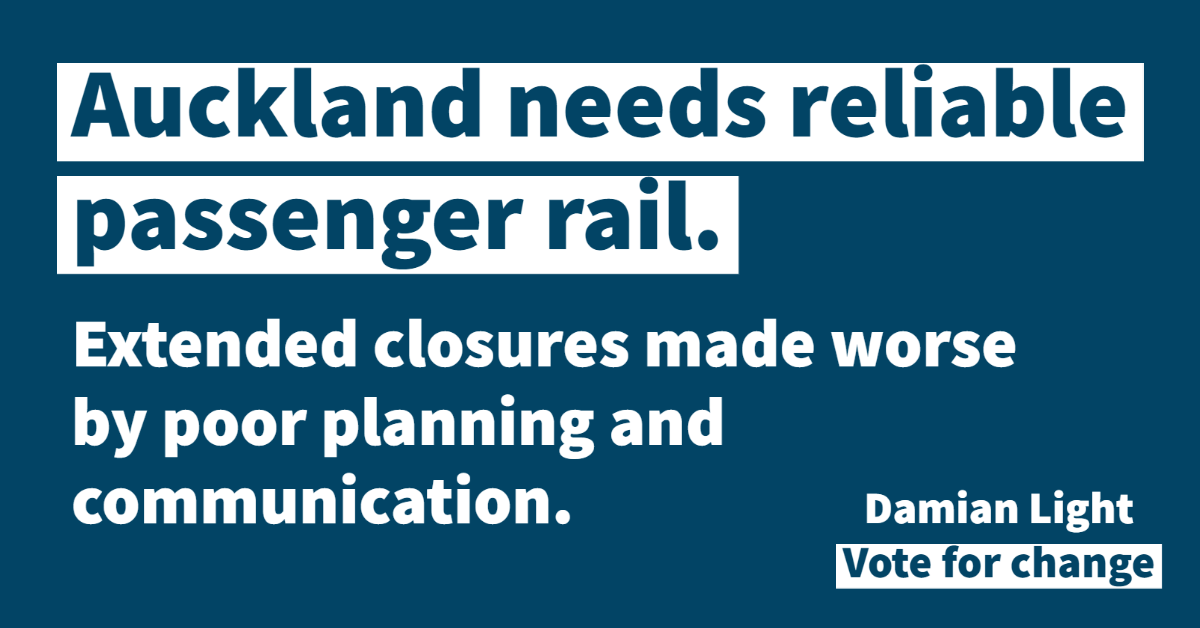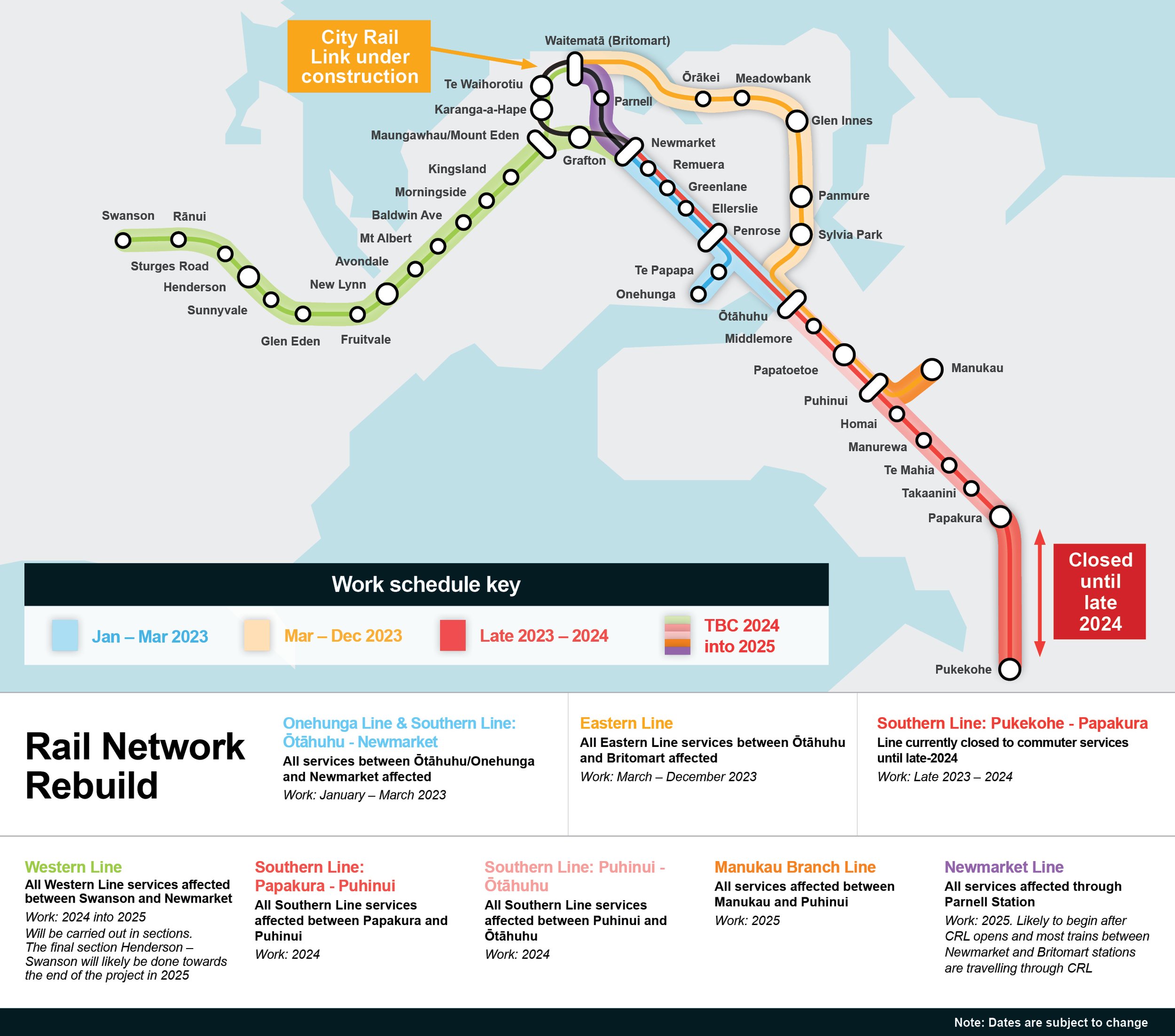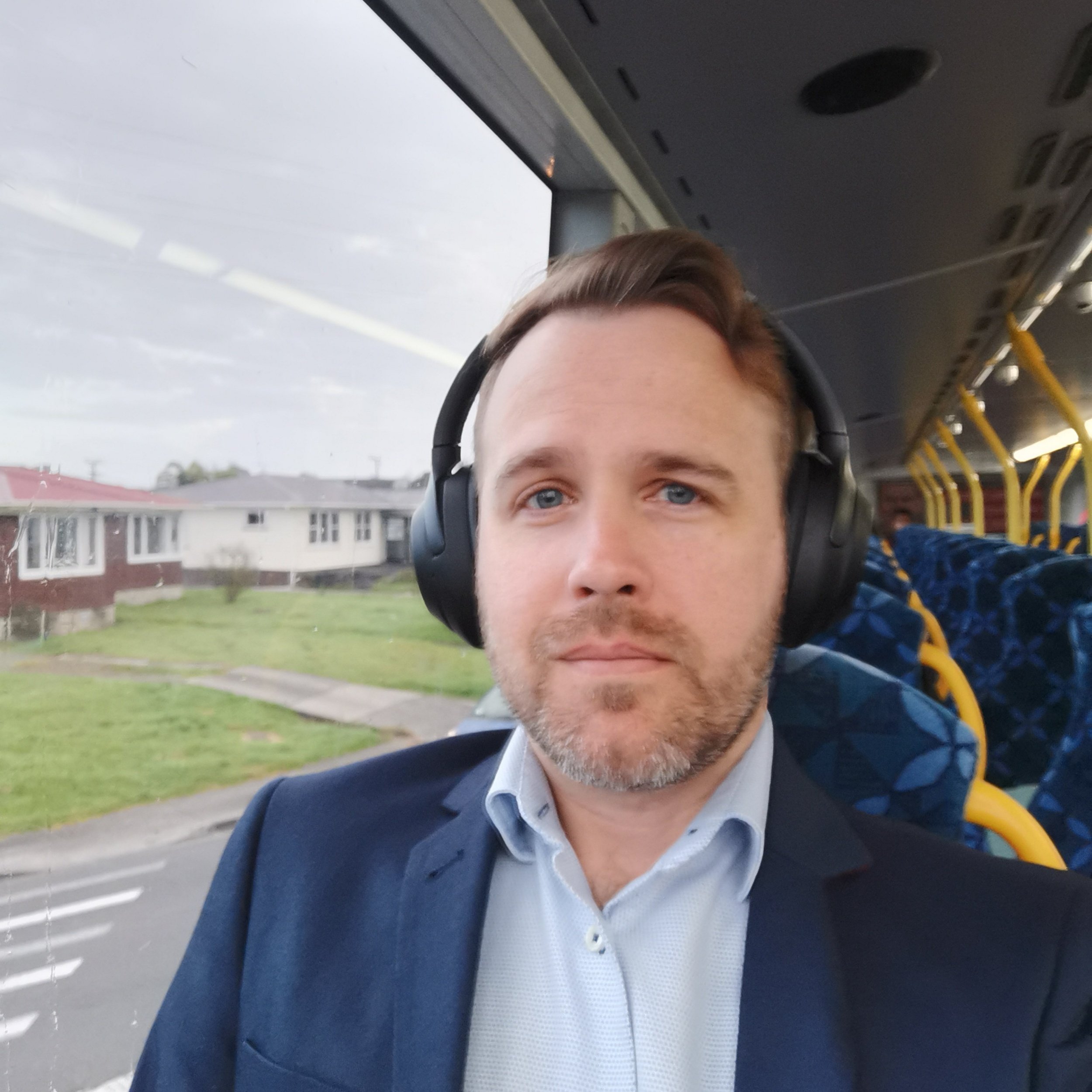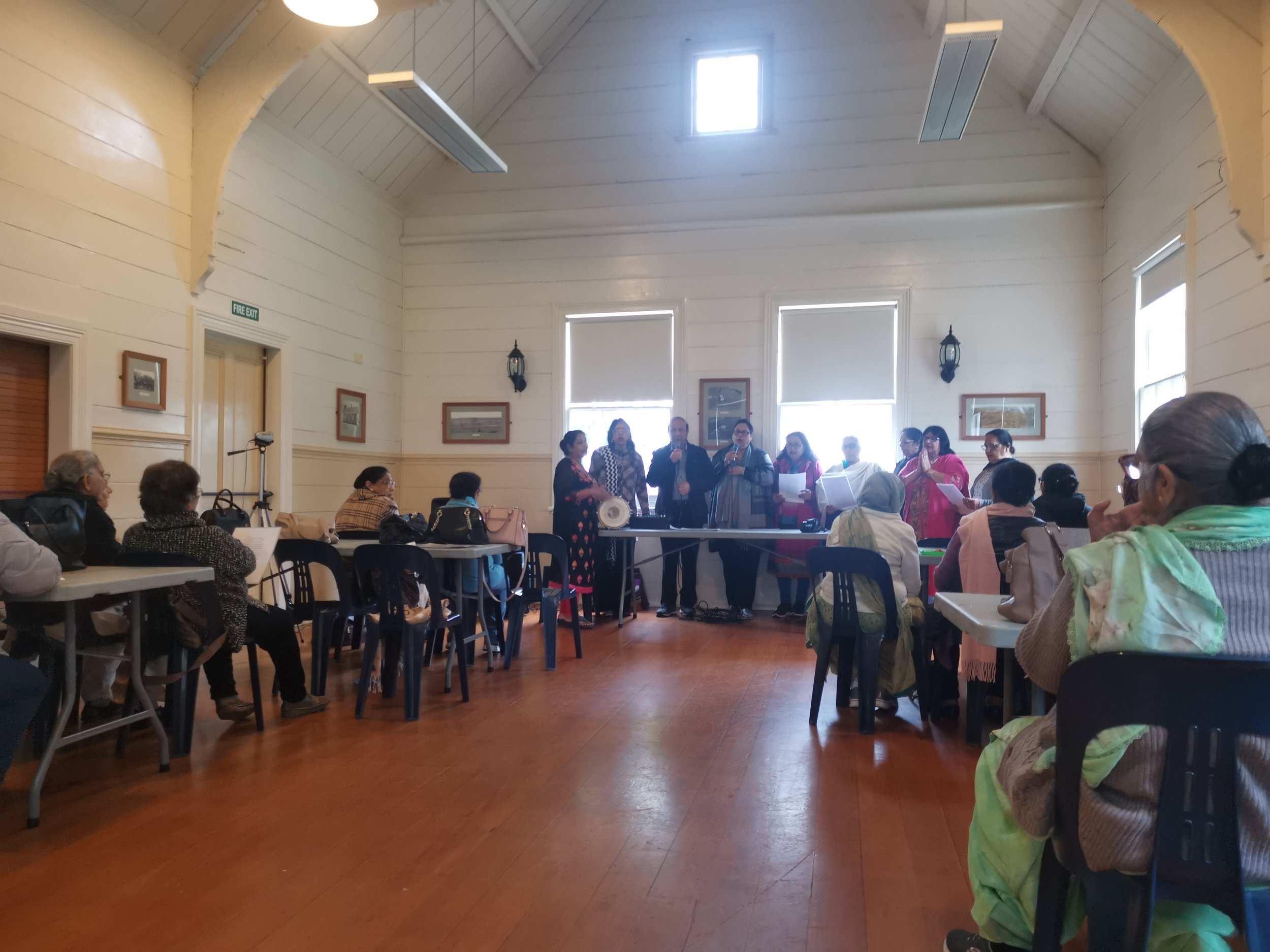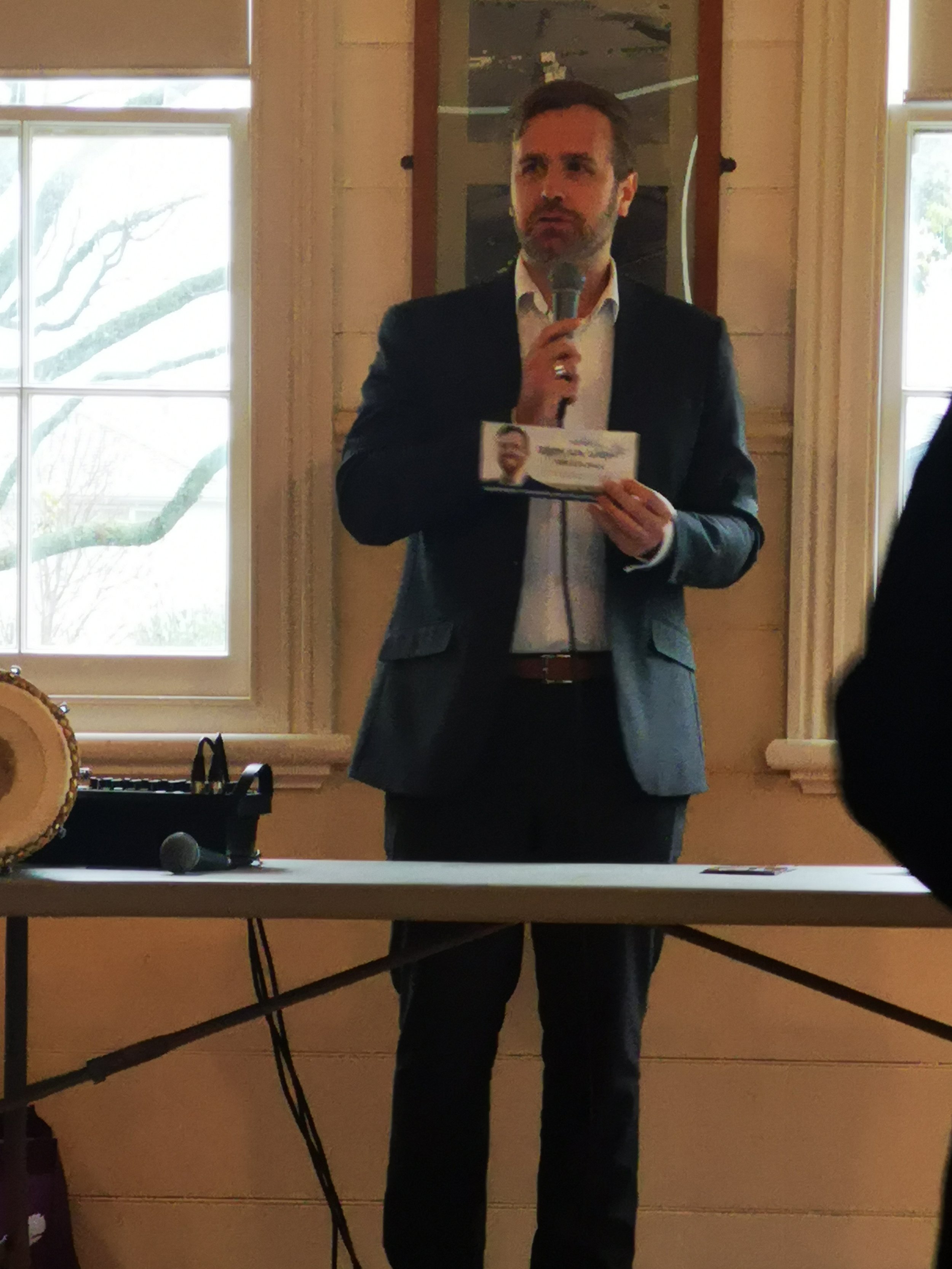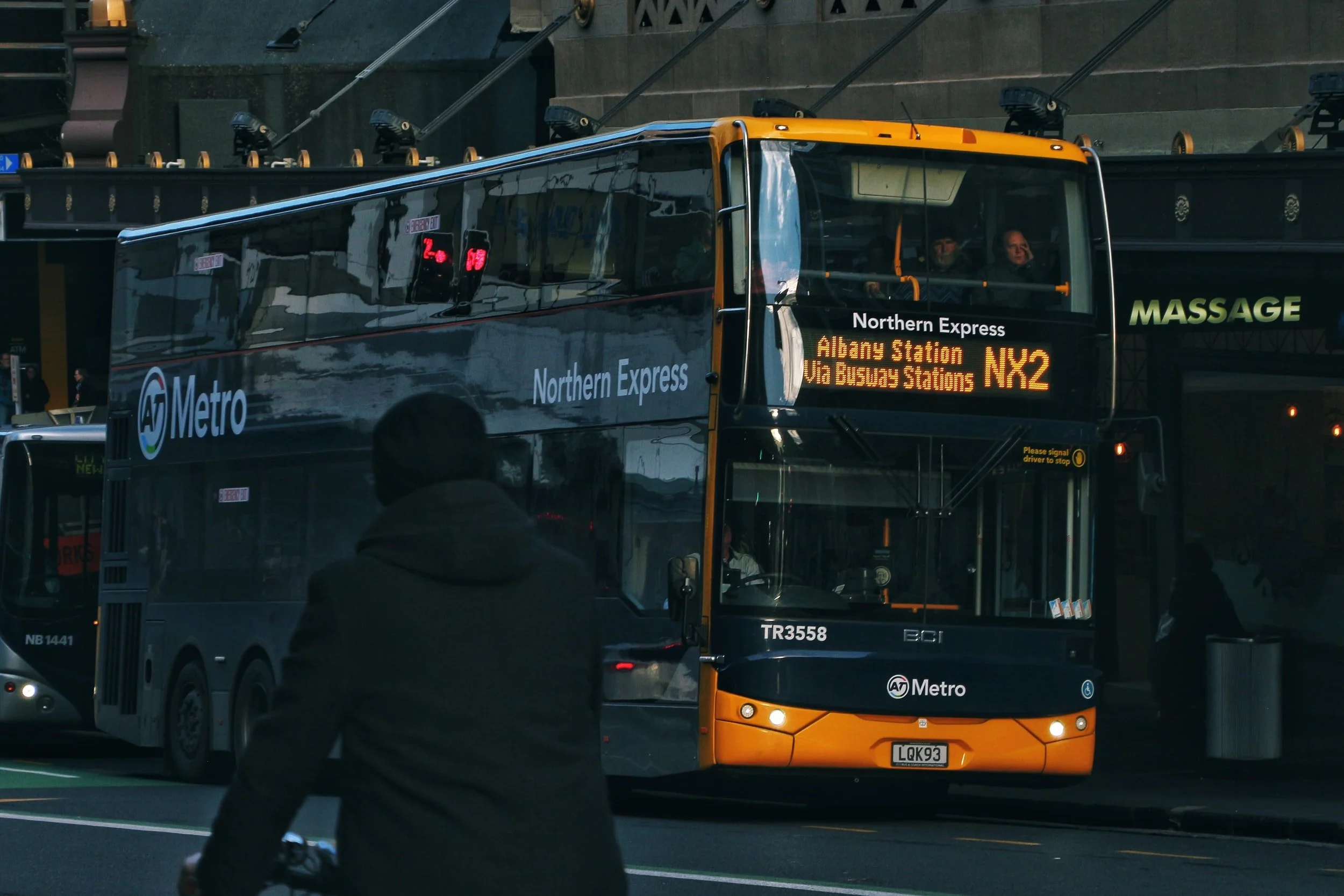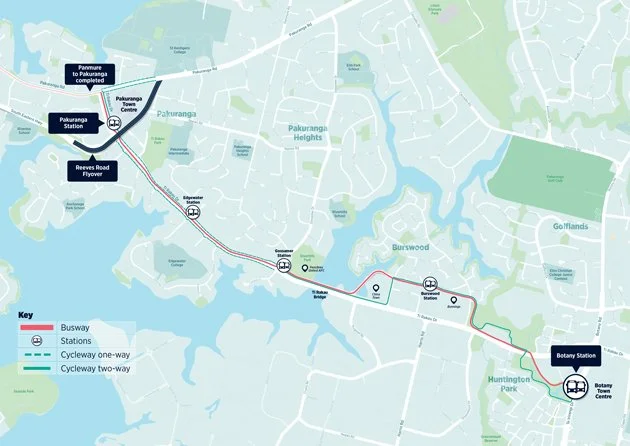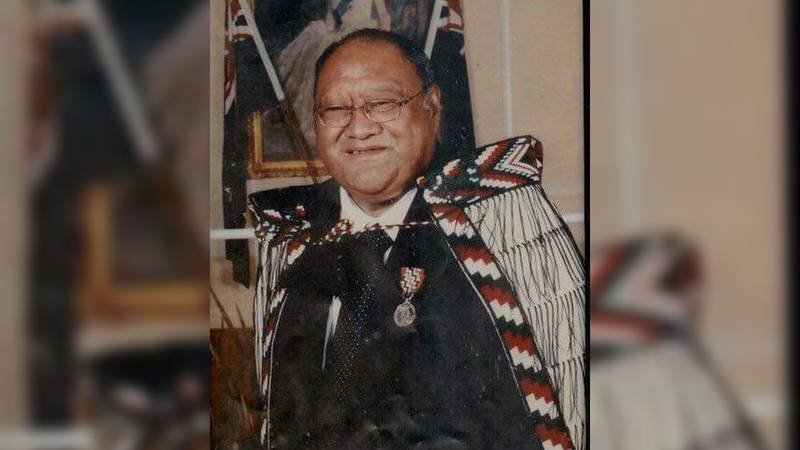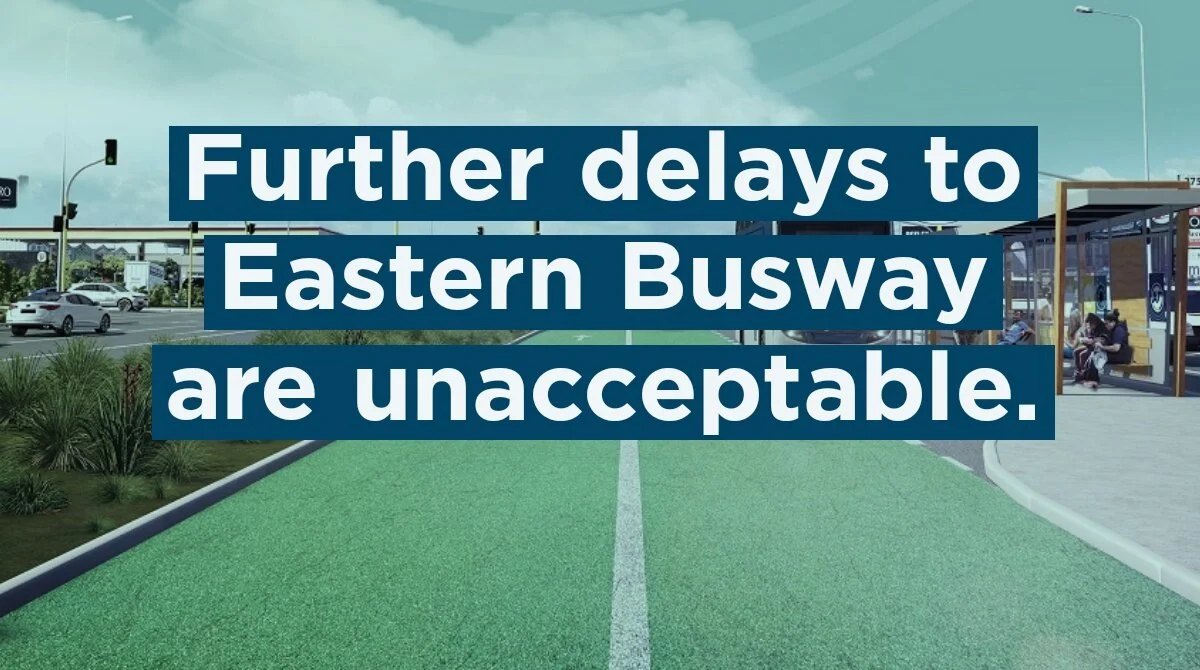Aviemore Drive safety improvements open for feedback
To address the crash history and make the road safer for people walking and driving along Aviemore Drive, Auckland Transport is proposing changes and is seeking feedback until 10 December 2023.
To address the crash history and make the road safer for people walking and driving along Aviemore Drive, Auckland Transport is proposing changes and is seeking feedback until 10 December 2023.
Between 2018 and 2022, there were 36 recorded crashes along Aviemore Drive between Highland Park Drive and Lewisham Street. This included two crashes that resulted in fatalities, four crashes that resulted in serious injuries and nine crashes that resulted in minor injuries.
At the Highland Park Drive and Aviemore Drive intersection AT are proposing to:
Install a roundabout, making minor changes to the existing traffic islands to accommodate. This will not affect the existing trees.
Paint pedestrian and cyclist crossings on all legs of the intersection and install cycle path and separators near the intersection so people on bikes can navigate the roundabout safely.
These changes will result in the loss of nine on-street parking spaces.
Between Aberfeldy Avenue and Lewisham Street, AT are proposing to:
Install a raised pedestrian crossing with a long off ramp.
Relocate the existing bus stop from outside 94 to 104 Aviemore Drive and install a new bus stop between 101 and 103 Aviemore Drive.
These changes will result in the loss of 16 on street parking spaces
Attached is a concept design of the new roundabout and designs for both the roundabout and new pedestrian crossing.
You can find out more information, including how to have your say at https://haveyoursay.at.govt.nz/aviemore-safety
Feedback closes Sunday 10 December 2023.
Eastern Busway requires removal of some trees but will be replaced
While it’s unfortunate to see trees cut down, the removal of some trees in the short-term is necessary to enable the Eastern Busway project to progress. We know that transport is a significant challenge for locals and the Eastern Busway will provide more frequent, reliable and quicker transport choices for East Auckland.
One part of east Auckland is looking a little less green after numerous tall trees were chopped down to make way for the Eastern Busway public transport project.
- Anger over removal of large trees to make way for Eastern Busway, Times 22 August
While it’s unfortunate to see trees cut down, the removal of some trees in the short-term is necessary to enable the Eastern Busway project to progress. We know that transport is a significant challenge for locals and the Eastern Busway will provide more frequent, reliable and quicker transport choices for East Auckland.
The Eastern Busway project have advised us that they will be planting natives to replace trees that are removed during construction. The designs that we’ve been provided show an increased number of trees and planting as part of the landscaping along the route. We’ve seen their commitment to sustainability through the deconstruction and removal of houses along Ti Rakau Drive which provided recycling and reuse opportunities.
The Howick Local Board is committed to improving the number of trees through our Howick Urban Ngahere Action Plan, with the goal of increasing our tree canopy cover from an estimated 15% to a much healthier 30%. Last financial year we supported local volunteers to plant 16,420 trees in public reserves, in addition to those planted by council staff in parks and playgrounds. Last week in our feedback on Auckland’s draft Future Development Strategy, we suggested a policy to ensure that established trees lost through development are replaced as part of the consenting process.
To find out more about the Eastern Busway, including how they're mitigating the impact of construction and how to up to date on what's happening check out their website:
Eastern Busway stage 4 consultation open now
Eastern Busway Update: public consultation is now open for Stage 4 from Tī Rākau Drive to Botany Town Centre!
Eastern Busway Update: public consultation is now open for Stage 4 from Tī Rākau Drive to Botany Town Centre!
As a reminder:
Stage 1 Panmure to Pakuranga: completed
Stage 2 Pakuranga & Flyover: initial pre-construction has started, final resource consenting process underway
Stage 3R Pakuranga to Tī Rākau bridge (near Riverhills): final resource consenting underway
Stage 3C Tī Rākau bridge through Burswood: pending resource consent
Stage 4 Burswood to Botany: public consultation open
Stage 4 is being split into two parts:
EB4i: an interim route that will be in place by 2027 and will be in use until the link route is funded and built.
EB4L: Link the preferred, proposed design that will go for consents in August 2023 and built when funding is approved.
The Eastern Busway Team are hosting two public drop in sessions where you can find our more information and ask questions.
Wednesday 23 August 2023, 3pm – 7pm
Saturday 26 August 2023, 10am – 1pm
St Columba Presbyterian Church, 480 Tī Rākau Drive, Botany
You can find out more online, including how to provide your feedback.
What the draft Regional Public Transport Plan 2023 means for East Auckland
The Regional Public Transport Plan (RPTP) is Auckland Transport’s plan for public transport across the city. AT have released their new draft which outlines how public transport will be managed over the next 8 years.
The Regional Public Transport Plan (RPTP) is Auckland Transport’s plan for public transport across the city. AT have released their new draft which outlines how public transport will be managed over the next 8 years. Priority for 2023-2024 is to address the urgent concerns around reliability and recovering patronage levels, with 2025-2027 seeing new services emerge.
It’s the first time that we get to see the changes that we can expect from the opening of the CRL (due 2026) and Eastern Busway (due 2027). A number of bus services are being routed through the new busway which should help provide better connections and more reliable timekeeping. It’s great to see the return of the Half Moon Bay to Middlemore direct bus service – we’ve had plenty of feedback from locals who work at the hospital who miss this option. And more buses for Flat Bush and Ormiston, providing more transport options for the growing population here.
I’ve captured the key changes for East Auckland below, but highly recommend you check out the draft plan for yourself. There’s an interactive map that you can use to see where the new/changes services will run: https://platform.remix.com/project/58442957?latlng=-36.86435,174.72773,9.646
Auckland Transport are hosting an online discussion on Monday 14 August 7-8:30pm where you can ask questions and discuss the proposal in more detail.
Find more information and provide feedback: at.govt.nz/RPTP
Public consultation is open until Thursday 17 August.
The Howick Local Board will be provided a summary of the feedback from locals and across the city before we provide our formal input in September/October.
From 2025:
NEW 37 Highbrook to Manurewa new service, will be extended to Burswood in 2027
EXTRA 31 Botany to Māngere extra evening trips
EXTRA 35 Botany to Manukau extra evening trips
ROUTE CHANGED 352 Panmure to Manukau route changed via Accent Dr / Chapel Road
From 2026:
EXTRA Half Moon Bay Ferry additional peak and weekend trips (from 2026)
From 2027:
EXTRA 70 Botany to Britomart additional evening trips via new Eastern Busway
EXTRA 72M Botany to Britomart upgraded to frequent service under new 72 name (from at least every 30mins to every 15 mins)
ROUTE CHANGED 72X Botany to Britomart shortened to Howick to Britomart, new service 705
ROUTE CHANGED + EXTRA 31 Botany to Māngere changed to Ormiston to Māngere plus additional evening trips
ROUTE CHANGED 353 Botany to Manukau changed to go via Burswood via new Eastern Busway
EXTRA 711 Howick to Panmure upgraded to connector (at least every half hour, up from hourly)
EXTRA 712 Bucklands Beach to Panmure additional peak and evening trips
NEW AIR Airport to Botany extended to Botany providing direct access to/from Airport
NEW 354 Half Moon Bay to Middlemore new route via Botany, Smales Road and Ōtara (combines 314 and 734) connector (at least every 30 mins)
NEW 356 Half Moon Bay to Ormiston new route via Cockle Bay, Meadowlands, Botany, Kilkenny and Mission Heights (combines 735 and half of 355) connector (at least every 30 mins)
NEW 357 Ormiston to Manukau new route via Redoubt Rd (replaces half of 355) connector (at least every 30 mins)
NEW 705 Howick to Panmure via Meadowlands (at least every 30 mins at peak)
NEW 706 Ormiston to Panmure via Murphys Rd, Chapel Rd and Eastern Busway (at least every 30 mins at peak)
REMOVED 72C Botany to Panmure replaced with 72 Botany to Britomart
REMOVED 355 Botany to Manukau replaced with 356 Half Moon Bay to Ormiston and 357 Ormiston to Manukau
REMOVED 734 Half Moon Bay to Botany replaced with 354 Half Moon Bay to Middlemore
REMOVED 735 Half Moon Bay to Botany replaced with 356 Half Moon Bay to Ormiston
Public Consultation on Safer Speeds
Today Auckland Transport launched their consultation on their draft speed management plan Katoa, Ka Ora. This plan proposes to set safe and appropriate speeds on approximately 24% of the roads across Tāmaki Makaurau Auckland.
Today Auckland Transport launched their consultation on their draft speed management plan Katoa, Ka Ora. This plan proposes to set safe and appropriate speeds on approximately 24% of the roads across Tāmaki Makaurau Auckland.
“Katoa, Ka Ora” (KKO) means everyone alive, healthy, and well. As a Road to Zero partner, Auckland Transport wants Auckland’s roads to be free from deaths and serious injuries. Although speed is not
the only factor in a crash, it determines whether someone is seriously injured or killed. For example, someone hit by a vehicle moving at 50km/hr has an 80% chance of being killed or seriously injured. This risk drops to 30% at 40km/hr and 10% at 30km/hr. No matter whether you drive, walk, cycle or use public transport, everyone deserves to get to where they are going safely.
The Howick Local Board has provided some initial feedback into the plan, asking Auckland Transport to take an approach that's easy to understand and prioritises changes that provide the greatest impact to safety. We've also asked they listen to locals and don't overwhelm with too many changes at once.
The draft changes for our area are shown in this map, but there's an interactive version which you can zoom into to see more. https://haveyoursay.at.govt.nz/.../katoa-ka-ora...
The proposal is for 30km/h safe school or neighbourhood zones proposed for Bucklands Beach, Howick (near Owairoa School), Huntington Park and Flat Bush (east of Murphys Road). These are represented by the blue areas on the map.
Most (but not all) kura/schools will have a 30km/h variable speed zones added which mean reduced speeds during school hours. These are represented by the pink dotted lines, with the kura/school shown as purple dots.
It's really important that you have your say on these proposals, so please provide your feedback to support, oppose or make suggestions.
Close off for feedback is Monday 28 August.
Eastern Busway progresses
The Eastern Busway is a critical transport infrastructure for East Auckland, with significant potential benefits to public transport, private vehicles, walking and cycling.
Artists impression of the new Pakuranga Bus Station and Reeves Road Flyover (Eastern Busway Stage 2)
The Eastern Busway is a critical transport infrastructure for East Auckland, with significant potential benefits to public transport, private vehicles, walking and cycling.
The Howick Local Board recently provided feedback on the Notice of Requirement for Stage 2 (Pakuranga Bus Station and Reeves Road Flyover). We've asked the project to make sure they do everything they can to mitigate the impact of construction on local businesses, organisations and residents.
See the full story here: https://ourauckland.aucklandcouncil.govt.nz/news/2023/04/howick-local-board-feedback-on-eastern-busway-plans/
On the Saturday 1 April, the Minister for Transport and the Mayor officially turned the first sod of the next stage of the project, formally kicking off construction. It's been a long time coming, but it's great to see the progress happening.
First up is the extension of William Roberts Road, which will help provide an alternative route when Reeves Road is closed to build the new flyover. Keep track of the progress and find our more at http://easternbusway.nz
Another extended shutdown of the rail network due to more poor planning
Auckland Transport’s shock announcement that they will be closing large portions of the passenger rail network throughout 2023 and beyond is yet another example of the poor planning holding our city back.
Auckland Transport’s shock announcement today that they will be closing large portions of the passenger rail network throughout 2023 and beyond is yet another example of the poor planning and terrible communication holding our city back.
Auckland needs to urgently shift more people onto public transport to address congestion, climate emissions and road safety. Patronage took a hit from COVID-19, but has been showing encouraging signs of recovery. However this latest announcement will hurt the reputation of public transport.
In addition to the existing weekend, overnight and Summer shut downs:
Onehunga Line will be closed from January to March.
Southern Line will be closed between Ōtāhuhu and Britomart from January to March. Remains closed between Papakura and Pukekohe until late 2024.
Eastern Line is to be closed from March until December.
Western Line will be closed sometime in 2024 and 2025.
The Eastern and Southern Lines each carry around 300k passengers a month, all who will be forced to use alternatives. Apparently Auckland Transport have known about this for 7 months before announcing it today with vague promises that “Some rail replacement buses will run”. In truth they’re expecting most people to use existing bus services. But will there be any buses running - Auckland Transport is still cancelling around 1,800 trips a day due to significant driver shortages.
As many have pointed out, there have been plenty of other opportunities to get maintenance done with regular closures and shut downs. Most of the tracks and sleepers were replaced over the last 2 years, yet only now are we addressing the foundations. In October, the Eastern Line is closed 17 times, including the entire Labour Weekend for “track repair and upgrade projects”. On top of all of this they need 9 months for 23km of track (roughly 80m a day).
Auckland Transport have said that rail needs maintenance “Like roads, they suffer wear and tear over time.” But no one would anyone accept the closure of a main road for 9 months for maintenance. In East Auckland, they’re demolishing 140+ homes along Ti Rakau Drive to reduce disruption for road users during the construction of the Eastern Busway.
I don’t have an issue with the work being done - I’ve long campaigned for greater maintenance to improve the reliability and speed of rail services. But there’s little detail in the announcement about what this will actually deliver - what are the reliability or speed improvements?
I use public transport as my primary mode of transport, preferring it to sitting in traffic, so this will impact me directly. I use the Eastern Line to get to work and if elected to Council I planned to use it to get into the city centre.
Auckland Transport must urgently provide clarity on what the closures will provide, including the existing weekend, overnight and Summer shut downs. They must also provide the plan for the alternative services to give certainty - vague promises about some rail replacement buses isn’t sufficient. I would expect on some major routes that dedicated express buses would be available, using priority bus lanes where necessary to maintain reasonable timetables.
In addition, Auckland Transport needs to get it’s long term plan for transport infrastructure sorted - we cannot keep having massive disruptions to our network while we’re trying to encourage people to use it.
Car Free Day opportunity to try alternatives
It's international Car Free Day so I'm using public transport to get across Auckland (as I often do). It takes a little more planning but pretty easy with the Auckland Transport's mobile app. Plus I can listen to some tunes and catch up on news, emails and social media.
It's international Car Free Day so I'm using public transport to get across Auckland (as I often do). It takes a little more planning but pretty easy with the Auckland Transport's mobile app. Plus I can listen to some tunes and catch up on news, emails and social media.
As regular user of public transport I'm aware of the gaps - reliability, frequency, affordability and accessibility aren't where they need to be. But none of it is unfixable with the right focus. Dedicated bus lanes help with the first two which is why I'm such a vocal supporter of the Eastern Busway.
I also support active modes - we also need a connected network of walking and cycling paths, physically separated for safety. They don't have to cost millions or take decades, we can build them faster using proven, cost effective solutions.
There will always be people or situations where private motor vehicles might be necessary. The more people using public transport and active modes, the less cars which frees up road space for those that need it.
Private vehicles shouldn't be the only practical answer most of the time - I want to live in a city where public transport & active modes are realistic options for majority of travel.
Like any large city, Auckland needs transport options that can move large numbers of people efficiently with a little emissions as possible - public transport, walking and cycling are key to this. Done well they will reduce congestion, pollution, emissions and injuries.
If you haven't tried public transport recently, I highly recommend it. Buses have come a long way since I used to catch them to school. We have a single integrated ticketing system which is largely painless, the trains are amazing and ferries improving all the time.
Community asking for more investment in Flat Bush and Ormiston
On Monday the Bhartiya Samaj Charitable Trust hosted local candidates as part of their regular seniors meeting.
On Monday the Bhartiya Samaj Charitable Trust hosted local candidates as part of their regular seniors meeting.
It was a pretty wet and wild outside but the reception inside the Old Flat Bush School Hall was warm and welcoming. We were treated to music, group exercises and a delicious lunch.
Candidates were invited to introduce themselves and their priorities, followed by an opportunity for questions.
There were two big issues that came out of our discussions:
Transport and road safety: especially around the Flat Bush / Ormiston area and more specifically at the Intersection of Murphy’s Road and Redoubt Road.
Flat Bush Library and Community Centre: despite it’s massive population growth, this area still doesn’t’ have a community centre or library.
Both of these are priorities for me and hopefully the community’s wishes are heard by other candidates (even those who didn’t attend).
Pay increase for drivers a good start
Essential workers throughout this pandemic (and before), our bus drivers deserve better pay and conditions. Great to see this being recognised with Auckland Council announcing today that drivers will receive an increase of 8%, effective this Thursday.
Auckland Council is announcing an immediate wage increase for the city's bus drivers on Thursday to try and boost its staff numbers.
The average increase will be 8%, bringing the average wage up from $23.71 to $25.62 per hour.
It comes after continued bus service cancellations across the city amid staffing shortages and winter sickness.
Essential workers throughout this pandemic (and before), our bus drivers deserve better pay and conditions. Great to see this being recognised with Auckland Council announcing today that drivers will receive an increase of 8%, effective this Thursday.
Public transport is our greatest opportunity to improve congestion, emissions and road safety. For too long local governments have focused on the costs, trying to make it as cheap as possible while central government has placed complex rules on how its run leading to perverse outcomes. This means less focus on service quality and more pressure to keep wages down.
We need to invest more into public transport, taking into the account the significant social, economic and environmental benefits that it provides. And not just for those that use public transport - more reliable, accessible and frequent buses and trains is good for everyone.
Eastern Busway Burswood diversion continues to divide
I popped into Eastern Busway community drop in session in Burswood this morning. Nice to see full size maps and talk with knowledgeable staff from Eastern Busway Alliance.
I popped into Eastern Busway community drop in session in Burswood this morning. Nice to see full size maps and talk with knowledgeable staff from Eastern Busway Alliance.
I'm still unconvinced about the Burswood diversion and it was good to get a bit more information on it. Apparently it avoids underground infrastructure, reduces the number of intersections and will be faster to build.
Not surprisingly, local feedback is pretty mixed, with the loudest opposition from those who are directly impacted.
I'd still prefer to see this regionally significant project get the priority it deserves, with but ultimately the decision sits with the Board of Auckland Transport who are due to make the decision later this month.
On a more positive note, there's been good progress on reducing the visual, social and environmental impacts of the Reeves Rd Flyover. By ensuring its integrated into Pakuranga Town Centre masterplan, it should help connect the space underneath into more useful space. Great to hear that Te Tuhi has been involved in the discussions.
The Eastern Busway will be game changer for East Auckland and I cannot wait to see it done. It will connect up with the Airport to Botany busway, providing yet another connection onto rail network, airport and beyond.
See more at the Auckland Transport website.
How many people need to die for Auckland Transport to act?
Too many people are being killed or seriously injured on our roads. And Auckland Transport has been big on promises for road safety, but their record shows otherwise.
I’ve gone to write this piece a number of times, but struggled. Not because I don’t know what to write, but because it makes me so angry and frustrated. Too many people are being killed or seriously injured on our roads.
And Auckland Transport has been big on promises for road safety, but their record shows otherwise. Their website proclaims that they have adopted Vison Zero:
“Vision Zero, an ethics-based transport safety approach, was developed in Sweden in the late 1990s. It places responsibility on the people who design and operate the transport system to provide a safe system. This is a transport system that is built for human beings, that acknowledges that people make mistakes and human bodies are vulnerable to high-impact forces in the event of a crash. To protect people from forces that can cause traumatic injury we need to look at how the whole system works together to protect all those who use our roads.”
Levi James (19) was killed on his bike riding to see his grandmother.
The page that makes this bold claim that “No death or serious injury is acceptable” has little updates since 2020. The Auckland Transport Monthly crash statistics – Road deaths and serious injuries page hasn’t been updated since 15 April 2021 and most of the data is from 2020. No surprise, they’ve never taken road safety seriously.
But this is too important - people are being killed. These aren’t just numbers - real people are dying on our roads in avoidable situations.
On 5 March 2022, Levi James (19) was killed on his bike riding to see his grandmother. Not only is this a terrible tragedy, it was avoidable - Auckland Transport had recently completed a project in this area, but refused to consider basic safety improvements for bikes, even though their own plans and policies required it. And improvements recommended by an independent safety review weren’t implemented either. They’ve blamed budgets, but that’s a cop out - there are simple solutions that don’t cost big money. And this is meant to be a priority regional route on the strategic cycling network. Read this post on Greater Auckland for more details.
12 weeks since this terrible tragedy and Auckland Transport have done nothing.
In an email to a council worker after Levi's death, seen by the Herald, an Auckland Transport (AT) staffer said the organisation had considered removing parking outside the shops as a "quick win", however, that would require consultation with businesses and affected parties.
"We anticipate that given the town centre environment and businesses operating there would be varied responses and would take several months to complete."
This should be completely unacceptable, but it’s how Auckland Transport respond. Four years after the tragic loss of life in an intersection in East Tamaki, there is still no sign of action from Auckland Transport despite a coroner's ruling that the road layout was the primary cause of death.
William Wiki Teoi was killed trying to cross the road in East Tamaki.
William Wiki Teoi was hit by a car while crossing East Tamaki Rd in Ōtara and died later at Middlemore Hospital from heart failure in March 2018.
The 84-year-old had been trying to cross the busy four-lane road because a nearby pedestrian crossing was not accessible in his wheelchair.
Why has it taken so long to do nothing? Auckland Transport decided to do something else instead, widening the road instead of building a safe crossing for people.
I’ve been fighting with Auckland Transport to get them to build a crossing near my workplace - as we were promised in 2015. And again in 2017, 2018, 2019… When they finally did something (on one of the five intersections), they managed to make a complete meal of it.
How does this keep happening?
AT Board Papers 26 May 2022
Auckland Transport has a serious cultural issue that needs to be addressed. And culture is driven from the top - the executive leadership and the Board. So what is being said at the highest levels of Auckland Transport? At their Board meeting on 26 May 2022, this is what appears in their papers.
The AT safety team are aware of these concerning trends and are continuing to deliver on the 2021 business improvement review recommendations. One of the key actions has been the development of the advocacy plan, focusing on increasing our influence on policy and regulatory changes to support our Vision Zero strategy such as our ongoing work with NZ Police to increase enforcement efforts and with Ministry of Transport’s Fines and Penalties Review.
AT Board Papers 31 March 2022
For an organisation that is taking Vision Zero seriously will ensure that safety is an issue that everyone considers not just “the safety team”. Developing an advocacy plan isn’t going to bring back Levi, William or the 59 people killed on Auckland roads in 2021. Vision Zero requires a system response, not pushing the responsibility onto a team who’s responsible for advocating for change. “System designers are ultimately responsible for the safety level in the entire system - systems, design, maintenance and use.” is what their website says, but their Board papers say otherwise.
The data here is from December 2021 which is almost 6 months ago. Worse, the comment here is identical to the comment that appeared in the same report (but a different graph) in March 2022. Not only has AT done nothing in the period between these meetings, they’re just copying and pasting their excuses.
I’ve never seen an organisation do so little in the face of such awful, avoidable tragedy. I’ve worked for organisations that have hurt and lost people so have no illusions about how challenging this can be. But in every case I’ve seen people try to fix the problems, laser focus on the immediate issue and a increased focus on health and safety throughout the organisation. Auckland Transport seems immune to the very human response that we must all do better to ensure that people get home safety.
The Mayor and Councillors helped build this culture when they voted in support of a proposed Emergency Budget that cut funding for safety programmes, with the full knowledge that it would lead to more serious injuries and deaths on our roads.
I’ve sat in meetings and watched elected representatives and council staff debate which part of council should pay for critical safety infrastructure for children. I’ve seen the determined school representative come back month after month, begging for action not more words or promised. But instead of keeping our tamariki safe, Auckland Council has been distracted with it’s own internal processes.
I’ve written to the Chief Executive of Auckland Transport asking him why their organisation is failing to respond, although I have little faith that I will get a reasonable response.
What will it take for Auckland Transport and Auckland Council to act?
Submission on Auckland Council's preliminary response to housing intensification
Central Government (together with the Opposition) have created legislation that requires all larger cities in New Zealand to allow more intensification of housing. Auckland Council have prepared a preliminary response and asked for public feedback. The following is my submission.
Central Government (together with the Opposition) have created legislation that requires all larger cities in New Zealand to allow more intensification of housing. Auckland Council have prepared a preliminary response and asked for public feedback. The following is my submission.
What do you think of our proposed walkable catchment of 1200 metres from the edge of the city centre?
My response: Do not support - I think it should be further
I encourage Council to extend the walkable catchment to 2400 metres (30 minutes) for the City Centre. I would also encourage the use of Business - Mixed Use Zone instead of a Terrace Housing and Apartment Buildings zone to allow greater mixed use.
For many, walking is the default mode of transport with the 2018 census noting that at least 10% of people living in the central suburbs already walking to work. This is despite the existing safety and pollution issues that many pedestrians face, which suggests that it could rise much higher if it was encouraged, enabled and supported by fit for purpose infrastructure. We also need to consider the positive impact of micromobility which is further reducing distances and helping connect public transport and active modes. Limiting the catchment to 15 mins will significantly reduce the potential housing that could be developed near the city centre
What do you think of our proposed walkable catchment of 800 metres from the edge of the metropolitan centres?
My response: Do not support - I think it should be further
I encourage Council to increase the walkable catchments for the Metropolitan Centres in the isthmus (Newmarket, Sylvia Park) to 1600 metres (20 minutes) and 800 metres (10 minutes) for other Metropolitan Centres. Both Newmarket and Sylvia Park are vital commercial and retail centres that have good transport links, which can support greater growth.
What do you think of our proposed walkable catchment of 800 metres around rapid transit stops?
My response: Do not support - I think it should be further
I encourage Council to increase the walkable catchments for Rapid Transit Stops to 1600 metres (20 minutes) for Rapid Transit Stops. This is a relatively short distance to access frequent, reliable public transport and would enable much greater growth in areas that can support it. Retrofitting rapid transit into other parts of the city will always be complex and expensive, so we must better utilise what we already have and are planning to deliver. I strongly encourage Council to ensure that the definition of Rapid Transit in implementing the NPS-UD includes high bus priority areas.
I encourage Council to make use of the Business - Mixed Use Zone instead of a Terrace Housing and Apartment Buildings zone, in the first 200 metres of the Walkable Catchment of Rapid Transit stops. This will enable even greater, mixed use growth in these critical areas, moving us closer to the 15-minute neighbourhood.
What do you think of our proposal to apply the Terrace Housing and Apartment Buildings Zone to residential areas up to around 400 metres from large town centres with high accessibility?
My response: Do not support - I think it should be further
I support upzoning adjacent to town centres - enabling people to live near town centres will reduce our transport needs and improve the wellbeing of residents. The pandemic has reminded us how important it is to have easy access to the essentials without needing to travel across town. I encourage Council to consider extending the upzoning to a distance of 800m around all Town Centres defined by Council as ‘large + high accessibility’, as well as all other town centres on the isthmus.
What do you think of our proposal to apply the Terrace Housing and Apartment Buildings zone to residential areas up to around 200 metres from small town centres or large local centres with high accessibility?
My response: Do not support - I think it should be further
I support upzoning adjacent to town and local centres. However, I encourage Council to extend the upzoning up to 400m around all Town Centres which have have high accessibility. While our city is growing, we still have an opportunity to build in 15-minute neighbourhoods through the use of mixed use zoning close to town centres.
What do you think of our proposal to include identified special character areas as a qualifying matter?
My response: Do not support – I do not think special character areas should be a qualifying matter
I fully support genuine moves to protect our history including listed Heritage buildings, but do not support the protection of entire suburbs simply because they are old.
While I appreciate that this is a complex issue with limited time and resources, the approach that Auckland Council has taken to identify these buildings is too broad, leading to perverse outcomes. While there are suburbs of Auckland that have a number of historic houses that deserve protection, claiming an entire suburb needs protection is disingenuous. While we must protect the important historical buildings, not everything that was built in these neighbourhoods needs automatic protection.
Special Character Areas relies heavily on the concept of collective value, failing to recognise the importance of place and building, and creating the impression that suburbs that are not protected are at risk. In reality we need a more nuanced approach, that recognises the need for our city to grow and develop, while respecting where we’ve come from. There are plenty of good examples in New Zealand and around the world, where historic buildings are redeveloped in a way that respects the past while enabling them to remain current.
Finally, the Special Character overlays are focused on the central suburbs - the areas with the greatest access to transport and existing amenities. We must make better use of our existing infrastructure, while we close the significant deficit seen across the city.
What do you think of the proposed residential special character areas that we have identified?
My response: Do not support – I do not think special character areas should be a qualifying matter
As noted above, I fully support genuine moves to protect our history including listed Heritage buildings, but do not support the protection of entire suburbs simply because they are old.
Older homes were not built to modern standards of warmth and dryness, nor weather tightness. Replacing older homes and villas with modern apartments will radically improve quality of life for residents, offering warmer, drier and healthier living environments.
What do you think of the proposed business special character areas that we have identified?
My response: Do not support – I do not think special character areas should be a qualifying matter
As noted above, I fully support genuine moves to protect our history including listed Heritage buildings, but do not support the protection of entire suburbs simply because they are old.
Business zones need flexibility to adapt in order to provide for the needs of a growing local population. This includes providing for local shops and services, as well as apartment-style housing above.
What do you think of our proposal to include areas in Auckland with long-term significant infrastructure constraints as a qualifying matter?
My response: Other
I support the extremely limited use of infrastructure constraints where there is no other viable alternative. However, this cannot be used as an excuse and must be the option of last resort. I am deeply concerned that this is too open for abuse, given the poor state of the infrastructure in our city. There are few neighbourhoods that could claim they have no issues.
We know there are parts of Auckland where the infrastructure cannot cope with current demands, flooding streets and homes when there is heavy rain. Beaches become unswimmable as waste floods into our harbours. As our city continues to grow these issues continue to compound, increasing the risk of serious, long-term environmental damage. Watercare in particular has failed to identify, contain and resolve these issues, creating real concern that intensification will only lead to more issues.
It should be noted that these aren't new concerns - in East Auckland, the Manukau City Council apparently had a moratorium on intensification due to the lack of infrastructure but decades later, little has been done to address the gaps. Council must take proactive action to address these infrastructure gaps while investing across the city to build capacity for growth. Retrofitting infrastructure is expensive, disruptive and unpopular - we must make better use of our existing infrastructure and ensure that all new developments include sufficient infrastructure to support the planned growth. Intensification in existing urban areas is a more efficient use of infrastructure, compared to greenfield development. Prioritisation of infrastructure funding between greenfield growth and brownfield intensification needs to be considered.
If this is included as a qualifying matter, Council must ensure that there is a strict and transparent process to ensure it is not abused. Areas that are identified as requiring limited development must have a robust plan developed to address the gaps, including timeframes and funding. Long-term and permanent use should be extremely rare and only where there is no other alternative.
Other qualifying matters
Do you have feedback on any other qualifying matters? (please be clear which proposal you are talking about)
I support the Stockade Hill viewshaft protection which was secured after a long, expensive battle by local residents. It should be noted that this was established under the previous zoning rules and it should be reviewed to ensure that the existing overlay will continue to protect the views of the Waitematā.
I support the protection of viewshafts of cultural and spiritual significance to mana whenua in Tāmaki Makaurau.
Auckland Council mismanagement is costing us more
Imagine how different Auckland would look if our elected representatives hadn't wasted the first 10 years of the super city on vanity projects and bickering.
"Aucklanders may face higher than expected rates rises in future, some services may be cut, and major uncommitted projects delayed as worsening council finances hit the drawing-up of this year’s council Budget.
A continuing fall in revenue has pushed the council’s losses due to Covid-19 to $900 million, and a raft of previously unflagged measures are possible."
Imagine how different Auckland would look if our elected representatives hadn't wasted the first 10 years of the super city on vanity projects and bickering.
Goff wasted $935k on a secret report for a waterfront stadium that we don't need nor can afford. Now he's selling our local parks to balance the books.
He and almost every councillor wasted millions on the Wynyard Tram, now they're cutting services because we have no funds.
They declared a climate emergency in 2019, then put up public transport fares again & again while approving plans that increased our carbon emissions. As he leaves, Goff finally proposes some real action but he wants more money to do it and still can't say what the impact will be.
When I bang on about the appalling financial mismanagement at council, it's not for nothing. This is what happens - it has serious, long term impacts on our city, our neighbourhoods, our community.
I love this city, I just wish all our councillors cared just a little bit more
Auckland Council Budget 2022/2023 consultation feedback to Howick Local Board
As part of the Auckland Council budget consultation, the Howick Local Board hosted an online public forum. Here’s what I said in my 3 minutes.
As part of the Auckland Council budget consultation, the Howick Local Board hosted an online public forum. The following is a rough transcript of what I said in my 3 minutes:
Kia ora.
Thank you for the opportunity to speak, I will do my best to stay on topic and on time. Given the short window, I’ll focus on one regional and two linked local priorities.
Firstly I’m encouraged by the increased focus on climate action. As noted earlier, our goal is to reduce our emissions by 50 per cent by 2030. With less than 8 years left to deliver this massive change, we need to significantly increase action.
It’s good to see that we’re getting some improvements to the East Auckland public transport services, including more frequent services through Ormiston and Flat Bush.
The Budget proposes $144m for Cycling and $84m for walking which is great but is very light on the details of where this will happen. I understand that Auckland Transport is still finalising the plan for both active modes and I encourage the Howick Local Board to make sure that our area does not miss out on these opportunities.
Like one of the previous speakers, I have questioned the lack of carbon reduction targets or estimates - $1 Billion dollars is a lot of money to invest without knowing the impact. I’m not suggesting it’s too much, in fact I suspect it won’t be near enough to undo the damage that we continue to do to our environment. But the proposal represents a massive increase on previous funding and by ring fencing it we can have more confidence that it will deliver so I support it.
Onto the local priorities and I wanted to speak to both the greater focus on renewal and maintenance of assets and the need for the skatepark and other wheeled play at Lloyd Elsmore Park.
As some of you are aware, I’m involved with East Skate Club. While I’m not here formally speaking on their behalf, I do want to take this opportunity to endorse the need for a proper skatepark facility for our community.
I acknowledge the minor refurbishment that the HLB delivered which has improved the safety of the park. However, it’s still very small and outdated - ten kids and it’s full. It lacks basic facilities like toilets, water and shade. There is no pedestrian access, forcing kids to walk on the road which is unbelievably unsafe. In its current form it is in no way fit-for-purpose.
COVID has reminded us how important it is to have outdoor recreational options in our neighbourhoods. There are some amazing skateparks around, the success of the skatepark in Sir Barry Curtis Park is proof enough. If we create good spaces for our tamariki they will attract not just locals, but also people from all across the city. A decent skatepark will not just help locals, but also encourage people to visit East Auckland, bringing visitors and much needed revenue to our local businesses.
In order to be successful, the planning and design must include the users - skaters, kids of all ages. This will take time so the sooner we start the better. Thank you for including this as a priority.
Thank you.
I’m still working through the formal consultation process and will post a copy of my submission in the next few days.
The budget consultation will close at 5pm on Monday 28 March 2022. Details on the proposal and ways to have your say can be found at akhaveyoursay.nz/budget
Reducing fuel prices and public transport fares welcomed but needs long term solutions
It's great that the government has announced a reduction in public transport fares, given how critical mode shift is for addressing climate emissions, congestion & road safety.
It's great that the government has announced a reduction in public transport fares, given how critical mode shift is for addressing climate emissions, congestion & road safety.
While I suspect it was driven by pragmatic political factors, any action on transport poverty is welcomed.
Fuel taxes will be slashed by 25 cents a litre for the next three months at the cost of $350m. Public transport fares will be halved costing $25-40m.
I have questions about how this will happen practically and would like assurances that this will not negatively impact projects (funded by fuel taxes or not). I would like to think that the government will simply make more funds available, but so often the devil is in the detail.
It does raise the important question as to why it's taken so long for this to happen, especially given the relatively low cost. While price isn't the only factor, it does make a difference.
The bonus side effect of this is a wider understanding of how little it would actually cost to 100% fund public transport. The other side of this coin is the massive cost of continuing to over-subsidize private vehicle use. The fact that so many kiwis are hurting from rising fuel prices is a reflection of our poor transport options.
In the absence of a realistic alternative, people are forced to drive.
Reducing the cost of fuel is a relatively quick way to reduce pressure on household budgets and I expect most people will (understandably) welcome this. But unless we fix the underlying issues, it's still broken. I also worry how this will impact people when the cuts are removed and the prices go up again.
Also we must not lose sight of the bigger picture. This is only temporary - we still need to reform how we fund and manage public transport so that it can be affordable, accessible and reliable. The current model is clearly unfit for purpose and needs more than short term fixes.
Eastern Busway feedback shows Burswood diversion unpopular with locals
Auckland Transport have released the response to the December consultation on the Pakuranga to Botany leg of the Eastern Busway.
Auckland Transport have released the response to the December consultation on the Pakuranga to Botany leg of the Eastern Busway.
There's a bit to work through, but it's clear the Burswood diversion created a stir (which is no surprise given the shock it was to locals). I still question some of the info they've presented here and it feels very much like they're pushing a solution that the community doesn't want or need.
I fully support the Busway and want it delivered sooner. However driving a diversion through Burswood at the cost of many homes is unjustified. I applaud the response from local residents who have organised to oppose this bizarre proposal. My submission is available here.
Apparently AT have confirmed the proposed design for Pakuranga to Botany, although it's pretty light on details.
More consultations due later in the year, although it does feel like the decision has been made (using cost as the excuse).
Documents are available online - https://at.govt.nz/.../eastern-busway/pakuranga-to-botany/
Also interesting to note that the diversion has had mixed response from the Howick Local Board
A plan that would see the next stage of the Eastern Busway public transport project dissect a residential community has sparked heated debate between members of the Howick Local Board.
See the full article in https://www.times.co.nz/news/board-members-clash-over-busway/
Auckland Council finances still don't add up
Major transport projects like the Eastern Busway have been delayed because Auckland Council told us they didn't have the money to fund it. Yet the NZ Herald has revealed that council is sitting on $285 million of unspent regional fuel tax earmarked for transport.
Major transport projects like the Eastern Busway have been delayed because Auckland Council told us they didn't have the money to fund it. Yet the NZ Herald has revealed that council is sitting on $285 million of unspent regional fuel tax earmarked for transport.
“Auckland Council is sitting on a $285 million goldmine, after it failed to spend nearly half the money it raked in thanks to the regional fuel tax.
In 2018, the Government introduced an additional tax on fuel sold in Auckland of 10c a litre (with GST taking the figure to 11.5c) to help the council fund transport projects in the city.
But according to data from the council, as of December 2021, less than half of the $515 million raked in by the tax has actually been spent, leaving the council with a $285m tax surplus.”
Meanwhile this very same council is busy selling off our parks and community centres using the excuse they don't have enough money. The hearings for the East Auckland parks (Golflands Park, Fortyfoot Park, and Aberfeldy Park) have been delayed again and again, but council are still determined to sell them.
Even before the pandemic is was clear we needed more public space and it's even more important now.
Auckland Transport $37B plan nothing to celebrate
On Monday 28 June, the Board of Auckland Transport approved their ten year plan known as the Auckland Regional Land Transport Plan (RLTP). The plan comes with a hefty price tag of $37 Billion which on the face of it seems positive - Auckland has under invested in transport for far too long. However, there isn't much to celebrate.
On Monday 28 June, the Board of Auckland Transport approved their ten year plan known as the Auckland Regional Land Transport Plan (RLTP). The plan comes with a hefty price tag of $37 Billion which on the face of it seems positive - Auckland has under invested in transport for far too long. However, there isn't much to celebrate.
It does not meet the needs of our current growth projections, so congestion will continue to get worse. Blocked roads already cost the city millions of dollars a day in lost productivity - we need action to provide realistic alternatives to unlock our city. Reliable, affordable and accessible public transport would take pressure off our roads and leave capacity for those who need their vehicles.
It does not move us towards the council's climate change target of reducing emissions by 64% by 2030. In fact it only claims to reduce emissions by a mere 1% and that relies on the government's controversial freebate scheme for electric vehicles. Analysis by people far smarter than me suggests that the plan will actually increase emissions in the short term. Auckland Council declared a climate emergency in 2019 and has done little since (in fact public transport fares have gone up twice since).
It does not deliver the infrastructure we need - key projects like the Eastern Busway are delayed. It’s taken far too long to get this project to this point and now it’s going to be another two years late bringing the final date to around 2026 (I won’t hold my breath). This is despite promises from the Mayor last year that delays like this wouldn’t happen.
Our elected representatives had their vote last Thursday, and to their credit, both Howick Ward Councillors Sharon Stewart and Paul Young voted against it. But the plan was still endorsed by the rest of council and Auckland Transport has signed it off.
According to AT, they were hamstrung by the funds provided by Auckland Council in their 10 year plan. It’s worth noting that the RLTP is funded through the Regional Fuel Tax, the extra that Aucklanders have to pay at the fuel pump in exchange for an accelerated transport plan. I’ve always believed that this was a clumsy funding model and it’s not delivering.
What’s even more unbelievable is that the council is still out of touch with our transport needs. This should not happen - this process has taken months and involved countless staff from across Auckland Council and it’s various organisations. We all know that the council has funding challenges but to arrive at this point to discover that key projects and outcomes cannot be met is appalling. There aren't side projects that got lost in the detail, they’re core to the city's transport plan.
Auckland Council and Auckland Transport have agreed to develop a Transport Emissions Reductions Plan, but we've all heard the promises before. We’re already a year and a half through the decade and Auckland Transport is never on time. Even if they do agree to a plan this year, I have little faith they’ll be able to deliver it by 2030.
Further delays to Eastern Busway are unacceptable
Yesterday Auckland Transport admitted that the Eastern Busway has been delayed yet again.
They've blamed a council funding squeeze but the reality is that AT is incapable of delivering on their promises.
Yesterday Auckland Transport admitted that the Eastern Busway has been delayed yet again.
They've blamed a council funding squeeze but the reality is that AT is incapable of delivering on their promises.
We have been promised this for decades and it was finally happening. When it was under threat last year we were assured this would never happen. But frustrating here we are again, another slow down.
We've endured years of disruption from construction, paid more in fuel taxes and put up with dreadful congestion with promise that solution was coming. We now have to wait longer again.
While we've been waiting AT have reduced the plans, cut walking/cycling connections and delayed the delivery.
Meanwhile they've wasted millions on vanity projects like AT Local and the Wynyard Tram which have taken us backwards.
Disgraceful.
I'm furious - for over a decade we've been told that the CCOs aren't accountable to our elected representatives but nothing has been done.
It's clearly not working, it has to change.







